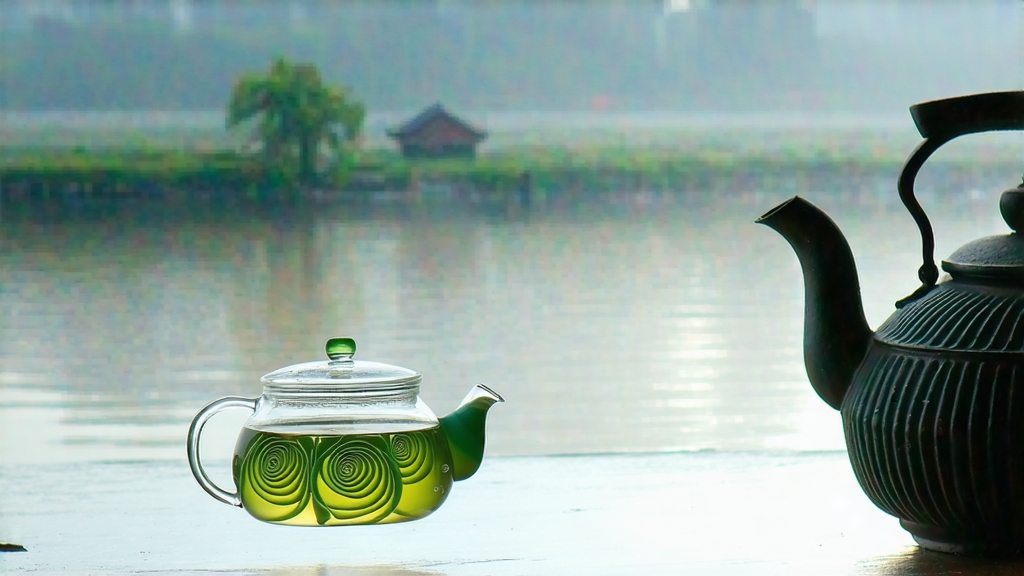
Among the pantheon of Chinese green teas, few names evoke as much poetry and precision as Biluochun. Literally “Green Snail Spring,” the tea is celebrated for its tiny spiral-shaped leaves, intoxicating fruity-floral aroma, and a sweetness so delicate it once compelled a Qing-dynasty emperor to rechristen the tea from its original, rather earthy name “Xia Sha Ren Xiang” (“Scary Fragrance”). Today, Biluochun remains one of China’s Ten Famous Teas, yet outside the Middle Kingdom it is still overshadowed by Dragon Well or Gunpowder. This article invites international tea lovers to discover the full story—from misty Dongting mountain isles to the meticulous fire-work of the leaf—so that the next cup you brew carries not only flavor but centuries of living culture.
- Historical Roots: From Island Temple to Imperial Tribute
Biluochun’s cradle is the eastern half of Dongting Mountain, a limestone outcrop rising from Taihu Lake in Jiangsu Province. The mountain is actually two islands, Dongshan and Xishan, whose microclimate—cool lake breezes, 80 % year-round humidity, and sandy, slightly acidic soil—creates natural mist curtains every dawn. According to local chronicles, tea picking on these islands began during the Tang dynasty (618-907), but the cultivar that would become Biluochun was first identified by a nun in the Song-era Biluo Temple. She noticed that certain wild tea bushes growing among peach, plum, and loquat trees produced tiny buds imbued with an unmistakable fruity scent. Monks began to steam and press the leaves into cakes, the fashion of the day, and traded them for temple supplies.
By the late Ming dynasty the region had switched to loose-leaf processing. In 1699 the Kangxi Emperor, on his southern inspection tour, was served the tea. He found the infusion so fragrant that he asked its name. Locals replied “Xia Sha Ren Xiang,” explaining that even fishermen could smell the aroma blowing across the lake and thought it supernatural. The emperor, feeling the name inelegant, renamed it Biluochun after the mountain and its snail-shell curl. Thereafter the tea entered the imperial tribute list; only 500 g were allowed to leave the district each spring, carried by mounted courier to Beijing within ten days.
-
Cultivars & Terroir: Why the Lake Matters
Modern botanists classify the original bush as a small-leaf Camellia sinensis var. sinensis, locally called “Dongting Qunti.” Unlike clonal gardens elsewhere, many Biluochun trees are still seed-propagated, giving heterogeneous hedges that range from knee-high to chest-high. Around the bushes, fruit trees remain intentionally interplanted; their roots share mycorrhizal fungi with tea, while petals fall onto the leaf surface, contributing volatile esters that survive firing. The lake itself acts as a giant heat reservoir, buffering night temperatures and encouraging slow amino-acid accumulation. The result is a leaf rich in theanine (responsible for sweetness) and low in catechins (which cause astringency), explaining Biluochun’s hallmark mellow cup. -
Picking Standards: One Bud, One Leaf, 2.5 Centimeters
Authentic Biluochun is harvested in a frantic three-week window from Grain Rain (April 20) to Beginning of Summer (May 5). Pickers rise at 4 a.m. to climb terraced orchards before sunrise, selecting only the apical bud plus the adjacent half-expanded leaf, a unit measuring exactly 2.0–2.5 cm. Veteran pluckers can finish 500 g of fresh leaf in three hours; it takes 55,000 such snippets to yield 500 g of finished tea. Baskets are lined with fresh fig leaves to prevent bruising, and the cargo must reach the village workshop within four hours—any delay initiates enzymatic oxidation that would flatten the signature green jade color. -
Crafting the Spiral: A Six-Step Choreography
a. Withering: Leaves are spread 2 cm thick on bamboo trays set under shade nets for 2–3 hours, reducing moisture from 76 % to 68 %. The goal is not desiccation but softening cell walls for the coming kneading.
b. Kill-Green (Sha Qing): A shallow, 160 °C iron wok receives